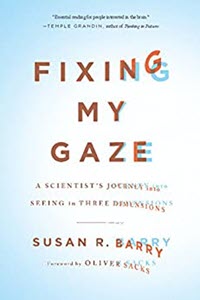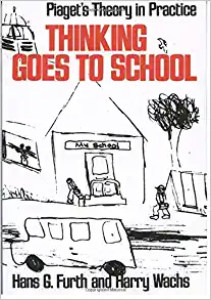Books We Recommend
Fixing My Gaze: A Scientist’s Journey Into Seeing in Three Dimensions
The following are a sample of reading references and resources that provide additional information about vision beyond 20/20 eyesight, and how it influences development, learning, performance, and rehabilitation.
Fixing My Gaze: A Scientist’s Journey Into Seeing in Three Dimensions
Beautifully written by neuroscientist Dr. Susan R. Barry, this is a first-hand account of the profound influence of vision on development.
Eye Power: An Updated Report on Vision Therapy
Envisioning a Bright Future: Interventions that Work for Children and Adults with Autism Spectrum Disorders
Visual Fitness: 7 Minutes to Better Eyesight and Beyond
An Insight Into Sports
This is a nice book that provides background information on the importance of good visual skills to sports performance.
Smart Medicine for Your Eyes: A Guide to Safe and Effective Relief of Common Eye Disorders
Endless Journey
After a serious car accident in which she suffered traumatic brain injury and was partially blinded, veterinarian Janet Stumbo was told that there was no chance for improvement.
Creating Your Personal Vision: A Mind-Body Guide for Better Eyesight
Behaviors, Beliefs and Emotions: Doctor-Patient Relationships in Behavioral Optometry
Co-authored by Abraham Shapiro, O.D. and Jack Esterson, Ph.D, this is a unique monograph showing how visual issues can be intertwined with how people respond to stressors in their lives. It is often those responses which trigger their visual symptoms and difficulties.
Understanding and Managing Vision Deficits: A Guide for Occupational Therapists
Diagnosis and Management of Special Populations
When Your Child Struggles: The Myths of 20/20 Vision: What Every Parent Needs to Know
See It. Say It. Do It! The Parent’s & Teacher’s Action Guide to Creating Successful Students and Confident Kids
Seeing Through New Eyes: Changing the Lives of Children with Autism, Asperger Syndrome and other Developmental Disabilities through Vision Therapy
Seeing is Achieving
Vision and School Success
The Suddenly Successful Student & Friends
Effects of Vision on Learning & School Performance
A short monograph informative for parents and educators.
How to Develop Your Child’s Intelligence
Thinking Goes to School
Another paperback that parents who home school will find well-suited to adopting as part of their curriculum. It is co-authored by two Piagetian scholars, the developmental optometrist Dr. Harry Wachs, and Hans Furth.
Childhood Learning: Journey or Race?
Written by the pioneering optometrist Dr. John Streff, this paperback demonstrates to parents that working at the level of how a child sees and understands the world is a key element in changing childhood learning from a race that is exhausting and fruitless to a valuable, successful journey for all.
Without Ritalin: A Natural Approach to ADD
Explores a unique route from vision anomalies in children to a diagnosis of ADHD and on to the subsequent overuse of Ritalin for all manner of learning and behavioral problems. Contains information on the latest ADHD research, the relationship between vision disorders and ADHD, and analysis of commonly prescribed behavior modification drugs.
Jillian’s Story: How Vision Therapy Changed My Daughter’s Life
The Role of Optometry in Early Identification of Autism Spectrum Disorders
Autism spectrum disorder (ASD) is a diverse, behaviorally identifiable neurodevelopmental disorder that occurs in 1 in 68 children. The absence of eye contact, unresponsiveness to facial gestures, and/or difficulty in sharing joint visual attention are signs of abnormal or atypical visual development. Optometric utilization of various targets used for diagnostic testing in infants and toddlers may be among the earliest probes of preferred visual looking patterns conducted with this population. This potentially places Optometry in the vanguard of identifying infants and young children at risk for developing ASD characteristics.
Visual Factors in Childhood Behavioral Disorders
Vision disorders can be misdiagnosed as ADHD
Vision disorders can be misdiagnosed as ADHD because there are signs and symptoms that overlap. A paper by Damari, Liu, and Smith addressed the importance of a thorough evaluation of the visual system before a child is placed on medication as the only alternative given.




















